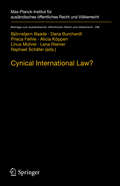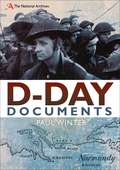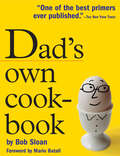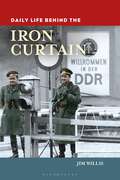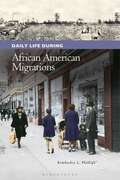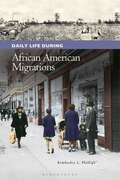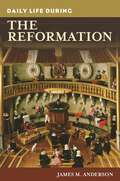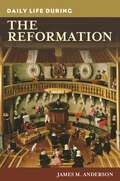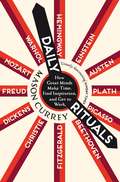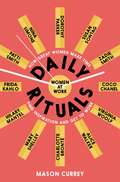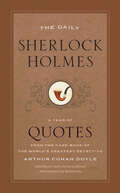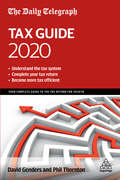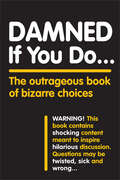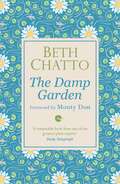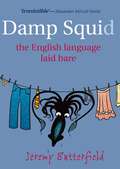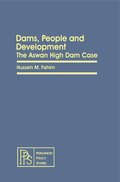- Table View
- List View
Cyclist - Climb: The most epic cycling ascents in the world
by CyclistExplore 35 of the most notorious, gruelling cycling climbs the world has to offer, guided by the experts at Cyclist, the world's biggest road cycling magazine.Route maps, altitude charts, first-hand ride reports and incredible imagery from the finest cycling photographers combine in this tribute to the peaks, hills and ascents that every cyclist should try.Tracing the routes of the greatest rides across France, Italy, Spain and Belgium, this beautiful book also includes lesser-known climbs covering northern and eastern Europe and the USA - with every single ride tried, tested and conquered by the experts at Cyclist magazine.Climbs include:Monte Grappa, ItalyZoncolan, ItalyPasso dello Stelvio, ItalyAlto de l'Angliru, SpainSa Calobra, SpainKoppenberg, BelgiumAlpe d'Huez, FranceCol Agnel, FranceCroix de Fer, FranceThe Trollstigen, NowayMauna Kea, USA
Cynical International Law?: Abuse and Circumvention in Public International and European Law (Beiträge zum ausländischen öffentlichen Recht und Völkerrecht #296)
by Björnstjern Baade Dana Burchardt Prisca Feihle Alicia Köppen Linus Mührel Lena Riemer Raphael SchäferAnalysing international law through the prism of “cynicism” makes it possible to look beyond overt disregard for international law, currently discussed in terms of a backlash or crisis. The concept allows to analyse and criticise structural features and specific uses of international law that seem detrimental to international law in a more subtle way. Unlike its ancient predecessor, cynicism nowadays refers not to a bold critique of power but to uses and abuses of international law that pursue one-sided interests tacitly disregarding the legal structure applied. From this point of view, the contributions critically reflect on the theoretical foundations of international law, in particular its relationship to power, actors such as the International Law Commission and international judges, and specific fields, including international human rights, humanitarian, criminal, tax and investment law.
D-Day Documents
by Paul WinterPublished in partnership with the National Archives, D-Day Documents is a commemorative collection of previously unpublished documents marking the 70th anniversary of the Normandy landings. This unprecedented book contains not only 21st Army Group intelligence reports on 'Omaha' Beach, RAF Photographic Reconnaissance prints and the ship's log of HMS Warspite but various other important official documents covering different aspects of Operations Neptune and Overlord. Crucially, this single volume brings together for the first time the war diary entries of all Anglo-Canadian 'spear-head' units and regiments who landed in France on 6 June 1944. A unique publication, which celebrates one of the most momentous days in modern military history, D-Day Documents will fascinate anyone with an interest in the Second World War, as well as offering an invaluable primary source for military historians.
Dad's Own Cookbook
by Bob SloanIt's time to become the new hero of the kitchen. Or at least put aside your fear of frying (not to mention sautéing, roasting, or tossing a salad). Dad's Own Cookbook shows how to do everything from handling a knife properly to juggling three dishes so that dinner comes together on schedule. Its lively charts, tips, and directions replace intimidation with pleasure and camaraderie, and its 150 great recipes will turn the most culinarily challenged dad into the family chef.
Dad's Wit and Wisdom: Quips and Quotes for Fantastic Fathers
by Richard BensonWhen your precious offspring have hijacked the car and there’s a hole in your wallet the size of the Grand Canyon, kick back and relax with this hilarious book, crammed full of quips and quotes to remind you why being a dad is the best job in the world.
Dahomey’s Royal Architecture: An Earthen Record of Construction, Subjugation, and Reclamation (Routledge Research in Architectural History)
by Lynne Ellsworth LarsenDahomey’s Royal Architecture examines the West African kingdom of Dahomey, located in present-day Republic of Benin. The book explores the Royal Palace of Dahomey’s relationship to the religious, cultural, and national identity of the pre-colonial Kingdom of Dahomey (c. 1625–1892), colonial Dahomey (1892–1960) and post-colonial Benin (1960–present). The Royal Palace of Dahomey covers more than 108 acres and was surrounded by a wall over two miles long. When the French colonial army arrived in Abomey in 1892, the ruling king set fire to the palace to keep it from falling into enemy hands. Though much of the palace structure was subsequently left to ruin, a portion of it was restored from which the French ruled for a short period. In 1945, the colonial administration transformed part of the palace into a museum, and in 1985 the entire palace was added to UNESCO’s World Heritage list. This book documents the palace’s physical transformations in relation to its changing purposes and explores how the space maintained religious significance despite change. The palace’s construction, destruction, and restorations demonstrate how architecture can be manipulated and transformed according to the agendas of governments or according to the religious and cultural needs of a populace. The palace functions as a historic record by discussing aspects of documentation, revision, language, and interpretation. Covering almost four centuries of Dahomey’s history, this book will be of interest to researchers and students of African art and architecture, religious studies, west African history, and post-colonial studies.
Dahomey’s Royal Architecture: An Earthen Record of Construction, Subjugation, and Reclamation (Routledge Research in Architectural History)
by Lynne Ellsworth LarsenDahomey’s Royal Architecture examines the West African kingdom of Dahomey, located in present-day Republic of Benin. The book explores the Royal Palace of Dahomey’s relationship to the religious, cultural, and national identity of the pre-colonial Kingdom of Dahomey (c. 1625–1892), colonial Dahomey (1892–1960) and post-colonial Benin (1960–present). The Royal Palace of Dahomey covers more than 108 acres and was surrounded by a wall over two miles long. When the French colonial army arrived in Abomey in 1892, the ruling king set fire to the palace to keep it from falling into enemy hands. Though much of the palace structure was subsequently left to ruin, a portion of it was restored from which the French ruled for a short period. In 1945, the colonial administration transformed part of the palace into a museum, and in 1985 the entire palace was added to UNESCO’s World Heritage list. This book documents the palace’s physical transformations in relation to its changing purposes and explores how the space maintained religious significance despite change. The palace’s construction, destruction, and restorations demonstrate how architecture can be manipulated and transformed according to the agendas of governments or according to the religious and cultural needs of a populace. The palace functions as a historic record by discussing aspects of documentation, revision, language, and interpretation. Covering almost four centuries of Dahomey’s history, this book will be of interest to researchers and students of African art and architecture, religious studies, west African history, and post-colonial studies.
Daily Life behind the Iron Curtain (The Greenwood Press Daily Life Through History Series)
by Jim WillisThis compelling book describes how everyday people courageously survived under repressive Communist regimes until the voices and actions of rebellious individuals resulted in the fall of the Iron Curtain in Europe.Part of Greenwood's Daily Life through History series, Daily Life behind the Iron Curtain enables today's generations to understand what it was like for those living in Eastern Europe during the Cold War, particularly the period from 1961 to 1989, the era during which these people—East Germans in particular—lived in the imposing shadow of the Berlin Wall.An introductory chapter discusses the Russian Revolution, the end of World War II, and the establishment of the Socialist state, clarifying the reasons for the construction of the Berlin Wall. Many historical anecdotes bring these past experiences to life, covering all aspects of life behind the Iron Curtain, including separation of families and the effects on family life, diet, rationing, media, clothing and trends, strict travel restrictions, defection attempts, and the evolving political climate. The final chapter describes Eastern Europe after the fall of the Berlin wall and the slow assimilation of East into West, and examines Europe after Communism.
Daily Life behind the Iron Curtain (The Greenwood Press Daily Life Through History Series)
by Jim WillisThis compelling book describes how everyday people courageously survived under repressive Communist regimes until the voices and actions of rebellious individuals resulted in the fall of the Iron Curtain in Europe.Part of Greenwood's Daily Life through History series, Daily Life behind the Iron Curtain enables today's generations to understand what it was like for those living in Eastern Europe during the Cold War, particularly the period from 1961 to 1989, the era during which these people—East Germans in particular—lived in the imposing shadow of the Berlin Wall.An introductory chapter discusses the Russian Revolution, the end of World War II, and the establishment of the Socialist state, clarifying the reasons for the construction of the Berlin Wall. Many historical anecdotes bring these past experiences to life, covering all aspects of life behind the Iron Curtain, including separation of families and the effects on family life, diet, rationing, media, clothing and trends, strict travel restrictions, defection attempts, and the evolving political climate. The final chapter describes Eastern Europe after the fall of the Berlin wall and the slow assimilation of East into West, and examines Europe after Communism.
Daily Life during African American Migrations (The Greenwood Press Daily Life Through History Series: Daily Life in the United States)
by Kimberley L. PhillipsThis book examines the century-long migration of African Americans who moved within the South after the Civil War and then left to settle permanently in other regions, irrevocably altering the political, social, and cultural history of the United States; and considers these movements within the broader historical, political, and cultural context of the African Diaspora.Daily Life during African American Migrations focuses attention to the everyday social, cultural, and political lives of migrants in the United States as they established communities far away from their former homes. This book examines blacks' labor and urban experiences, social and political activism, and cultural and communal identities, while also considering the specificity of African Americans' migration as part of their long struggle for freedom and equality.The author merges information from black migration studies, which focus on the internal movement of African American people in the United States, with African Diaspora studies, which consider peoples of African descent who have settled far from their native homes—either voluntarily or through duress—to document how these immigrants and their children create new communities while maintaining cultural connections with Africa. The stories of the nine million African Americans who collectively left the South between 1865 and 1965—and the millions more who left the Caribbean and Africa—not only document this long history of migration, but also present compelling human drama.
Daily Life during African American Migrations (The Greenwood Press Daily Life Through History Series: Daily Life in the United States)
by Kimberley L. PhillipsThis book examines the century-long migration of African Americans who moved within the South after the Civil War and then left to settle permanently in other regions, irrevocably altering the political, social, and cultural history of the United States; and considers these movements within the broader historical, political, and cultural context of the African Diaspora.Daily Life during African American Migrations focuses attention to the everyday social, cultural, and political lives of migrants in the United States as they established communities far away from their former homes. This book examines blacks' labor and urban experiences, social and political activism, and cultural and communal identities, while also considering the specificity of African Americans' migration as part of their long struggle for freedom and equality.The author merges information from black migration studies, which focus on the internal movement of African American people in the United States, with African Diaspora studies, which consider peoples of African descent who have settled far from their native homes—either voluntarily or through duress—to document how these immigrants and their children create new communities while maintaining cultural connections with Africa. The stories of the nine million African Americans who collectively left the South between 1865 and 1965—and the millions more who left the Caribbean and Africa—not only document this long history of migration, but also present compelling human drama.
Daily Life during the Reformation (The Greenwood Press Daily Life Through History Series)
by James M. AndersonThis broad exploration captures the lives of ordinary people during the turbulent period that transformed early Modern Europe.Organized thematically, Daily Life during the Reformation covers the hectic and tumultuous years between 1517 and 1648, allowing readers to discover what it was like for ordinary people during this critical period and to compare events and living conditions in early Modern Europe with those of today. With the help of eyewitness accounts, the book focuses on the lives of the people, the conditions in which they lived and died, their roles in the unfolding events of the Reformation, and the Reformation's effects on them. Leading protagonists are described, as are their beliefs and the impact of those beliefs on the population in general and in particular cases. The book also explores, for example, the medical practice of the time, which, while not considered black magic, was close to it.
Daily Life during the Reformation (The Greenwood Press Daily Life Through History Series)
by James M. AndersonThis broad exploration captures the lives of ordinary people during the turbulent period that transformed early Modern Europe.Organized thematically, Daily Life during the Reformation covers the hectic and tumultuous years between 1517 and 1648, allowing readers to discover what it was like for ordinary people during this critical period and to compare events and living conditions in early Modern Europe with those of today. With the help of eyewitness accounts, the book focuses on the lives of the people, the conditions in which they lived and died, their roles in the unfolding events of the Reformation, and the Reformation's effects on them. Leading protagonists are described, as are their beliefs and the impact of those beliefs on the population in general and in particular cases. The book also explores, for example, the medical practice of the time, which, while not considered black magic, was close to it.
Daily Rituals: How Great Minds Make Time, Find Inspiration, and Get to Work
by Mason Currey'Utterly fascinating' Daisy Goodwin, Sunday TimesBenjamin Franklin took daily naked air baths and Toulouse-Lautrec painted in brothels. Edith Sitwell worked in bed, and George Gershwin composed at the piano in pyjamas. Freud worked sixteen hours a day, but Gertrude Stein could never write for more than thirty minutes, and F. Scott Fitzgerald wrote in gin-fuelled bursts - he believed alcohol was essential to his creative process. From Marx to Murakami and Beethoven to Bacon, Daily Rituals by Mason Currey presents the working routines of more than a hundred and sixty of the greatest philosophers, writers, composers and artists ever to have lived. Whether by amphetamines or alcohol, headstand or boxing, these people made time and got to work.Featuring photographs of writers and artists at work, and filled with fascinating insights on the mechanics of genius and entertaining stories of the personalities behind it, Daily Rituals is irresistibly addictive, and utterly inspiring.
Daily Rituals: Women at Work
by Mason CurreyThe much-anticipated follow-up to the acclaimed and resoundingly fascinating Daily Rituals.Filled with the innovative, inspiring and wonderfully prolific accounts of some of the world's best female creators, Daily Rituals: Women at Work is the powerful and championing sequel to Mason Currey's first book, Daily Rituals. Barbara Hepworth sculpted outdoors and Janet Frame wore earmuffs as she worked to block out noise. Kate Chopin wrote with her six children ‘swarming around her’ whereas the artist Rosa Bonheur filled her bedroom with the sixty birds that inspired her work. Louise May Alcott wrote so vigorously – skipping sleep and meals – that she had to learn to write with her left hand to give her cramped right hand a break.Filled with details of the large and small choices these women made, Daily Rituals: Women at Work is about the day-to-day lives of some of the world’s most extraordinary creative minds who, whether Virginia Woolf, Charlotte Brontë, Nina Simone or Jane Campion, found the time and got to work.'An admirably succinct portrait of some distinctly uncommon lives' Meryle Secrest
The Daily Sherlock Holmes: A Year of Quotes from the Case-Book of the World’s Greatest Detective (A Year of Quotes)
by Arthur Conan Doyle“Dr. Watson, Mr. Sherlock Holmes,” said Stamford, introducing us. “How are you?” he said cordially, gripping my hand with a strength for which I should hardly have given him credit. “You have been in Afghanistan, I perceive.” “How on earth did you know that?” I asked in astonishment. “Never mind,” said he, chuckling to himself. At that first sight of Watson, Sherlock Holmes made brilliant deductions. But even he couldn’t know that their meeting was inaugurating a friendship that would make himself and the good Doctor cultural icons, as popular as ever more than a century after their 1887 debut. Through four novels and fifty-six stories, Arthur Conan Doyle led the pair through dramatic adventures that continue to thrill readers today, offering an unmatched combination of skillful plotting, period detail, humor, and distinctive characters. For a Holmes fan, there are few pleasures comparable to returning to his richly imagined world—the gaslit streets of Victorian London, the companionable clutter of 221B Baker Street, the reliable fuddlement (and nerves of steel) of Watson, the perverse genius of Holmes himself. It’s all there in The Daily Sherlock Holmes, the perfect bedside companion for fans of the world’s only consulting detective. Within these pages readers will find a quotation for every day of the year, drawn from across the Conan Doyle canon. Beloved characters and familiar lines recall favorite stories and scenes, while other passages remind us that Conan Doyle had a way with description and a ready wit. Moriarty and Mycroft, Lestrade and Mrs. Hudson; the Hound, the Red-Headed League, the Speckled Band, and the dread Reichenbach Falls—it’s all here, anchored, of course, in that unforgettable duo of Holmes and Watson. No book published this year will bring a Holmes fan more pleasure. Come, readers. The game is afoot.
The Daily Sherlock Holmes: A Year of Quotes from the Case-Book of the World’s Greatest Detective (A Year of Quotes)
by Arthur Conan Doyle“Dr. Watson, Mr. Sherlock Holmes,” said Stamford, introducing us. “How are you?” he said cordially, gripping my hand with a strength for which I should hardly have given him credit. “You have been in Afghanistan, I perceive.” “How on earth did you know that?” I asked in astonishment. “Never mind,” said he, chuckling to himself. At that first sight of Watson, Sherlock Holmes made brilliant deductions. But even he couldn’t know that their meeting was inaugurating a friendship that would make himself and the good Doctor cultural icons, as popular as ever more than a century after their 1887 debut. Through four novels and fifty-six stories, Arthur Conan Doyle led the pair through dramatic adventures that continue to thrill readers today, offering an unmatched combination of skillful plotting, period detail, humor, and distinctive characters. For a Holmes fan, there are few pleasures comparable to returning to his richly imagined world—the gaslit streets of Victorian London, the companionable clutter of 221B Baker Street, the reliable fuddlement (and nerves of steel) of Watson, the perverse genius of Holmes himself. It’s all there in The Daily Sherlock Holmes, the perfect bedside companion for fans of the world’s only consulting detective. Within these pages readers will find a quotation for every day of the year, drawn from across the Conan Doyle canon. Beloved characters and familiar lines recall favorite stories and scenes, while other passages remind us that Conan Doyle had a way with description and a ready wit. Moriarty and Mycroft, Lestrade and Mrs. Hudson; the Hound, the Red-Headed League, the Speckled Band, and the dread Reichenbach Falls—it’s all here, anchored, of course, in that unforgettable duo of Holmes and Watson. No book published this year will bring a Holmes fan more pleasure. Come, readers. The game is afoot.
The Daily Sherlock Holmes: A Year of Quotes from the Case-Book of the World’s Greatest Detective (A Year of Quotes)
by Arthur Conan Doyle“Dr. Watson, Mr. Sherlock Holmes,” said Stamford, introducing us. “How are you?” he said cordially, gripping my hand with a strength for which I should hardly have given him credit. “You have been in Afghanistan, I perceive.” “How on earth did you know that?” I asked in astonishment. “Never mind,” said he, chuckling to himself. At that first sight of Watson, Sherlock Holmes made brilliant deductions. But even he couldn’t know that their meeting was inaugurating a friendship that would make himself and the good Doctor cultural icons, as popular as ever more than a century after their 1887 debut. Through four novels and fifty-six stories, Arthur Conan Doyle led the pair through dramatic adventures that continue to thrill readers today, offering an unmatched combination of skillful plotting, period detail, humor, and distinctive characters. For a Holmes fan, there are few pleasures comparable to returning to his richly imagined world—the gaslit streets of Victorian London, the companionable clutter of 221B Baker Street, the reliable fuddlement (and nerves of steel) of Watson, the perverse genius of Holmes himself. It’s all there in The Daily Sherlock Holmes, the perfect bedside companion for fans of the world’s only consulting detective. Within these pages readers will find a quotation for every day of the year, drawn from across the Conan Doyle canon. Beloved characters and familiar lines recall favorite stories and scenes, while other passages remind us that Conan Doyle had a way with description and a ready wit. Moriarty and Mycroft, Lestrade and Mrs. Hudson; the Hound, the Red-Headed League, the Speckled Band, and the dread Reichenbach Falls—it’s all here, anchored, of course, in that unforgettable duo of Holmes and Watson. No book published this year will bring a Holmes fan more pleasure. Come, readers. The game is afoot.
The Daily Sherlock Holmes: A Year of Quotes from the Case-Book of the World’s Greatest Detective (A Year of Quotes)
by Arthur Conan Doyle“Dr. Watson, Mr. Sherlock Holmes,” said Stamford, introducing us. “How are you?” he said cordially, gripping my hand with a strength for which I should hardly have given him credit. “You have been in Afghanistan, I perceive.” “How on earth did you know that?” I asked in astonishment. “Never mind,” said he, chuckling to himself. At that first sight of Watson, Sherlock Holmes made brilliant deductions. But even he couldn’t know that their meeting was inaugurating a friendship that would make himself and the good Doctor cultural icons, as popular as ever more than a century after their 1887 debut. Through four novels and fifty-six stories, Arthur Conan Doyle led the pair through dramatic adventures that continue to thrill readers today, offering an unmatched combination of skillful plotting, period detail, humor, and distinctive characters. For a Holmes fan, there are few pleasures comparable to returning to his richly imagined world—the gaslit streets of Victorian London, the companionable clutter of 221B Baker Street, the reliable fuddlement (and nerves of steel) of Watson, the perverse genius of Holmes himself. It’s all there in The Daily Sherlock Holmes, the perfect bedside companion for fans of the world’s only consulting detective. Within these pages readers will find a quotation for every day of the year, drawn from across the Conan Doyle canon. Beloved characters and familiar lines recall favorite stories and scenes, while other passages remind us that Conan Doyle had a way with description and a ready wit. Moriarty and Mycroft, Lestrade and Mrs. Hudson; the Hound, the Red-Headed League, the Speckled Band, and the dread Reichenbach Falls—it’s all here, anchored, of course, in that unforgettable duo of Holmes and Watson. No book published this year will bring a Holmes fan more pleasure. Come, readers. The game is afoot.
The Daily Telegraph Tax Guide 2020: Your Complete Guide to the Tax Return for 2019/20
by Phil ThorntonThe Daily Telegraph Tax Guide is the UK's bestselling tax handbook, containing everything you need to know about completing a self-assessment tax return for 2019/20. With advice on how to complete self-assessment tax returns and a number of tax saving tips, this book includes:·Key changes from the Budget and Spring Statements ·Dealing effectively with HM Revenue & Customs ·Worked illustrations showing you how to complete your tax submission·How living or working abroad affects the tax that you pay·Tax saving tips which will help you save money·Inheritance Tax and potentially exempt transfersWhether you are self-employed, work part time or full time, are unemployed or retired, if you pay tax, The Daily Telegraph Tax Guide is invaluable. It helps ensure that you are as tax efficient as possible, offering practical advice, timetables and examples that make the complex and challenging world of tax returns easier to understand.
The Daily Telegraph Tax Guide 2020: Your Complete Guide to the Tax Return for 2019/20
by Phil ThorntonThe Daily Telegraph Tax Guide is the UK's bestselling tax handbook, containing everything you need to know about completing a self-assessment tax return for 2019/20. With advice on how to complete self-assessment tax returns and a number of tax saving tips, this book includes:·Key changes from the Budget and Spring Statements ·Dealing effectively with HM Revenue & Customs ·Worked illustrations showing you how to complete your tax submission·How living or working abroad affects the tax that you pay·Tax saving tips which will help you save money·Inheritance Tax and potentially exempt transfersWhether you are self-employed, work part time or full time, are unemployed or retired, if you pay tax, The Daily Telegraph Tax Guide is invaluable. It helps ensure that you are as tax efficient as possible, offering practical advice, timetables and examples that make the complex and challenging world of tax returns easier to understand.
Damned If You Do . . .: The Outrageous Book of Bizarre Choices
by Workman Publishing400 outrageously funny and shockingly bizarre "this or that" questions for adults, featuring a good dose of gross, a little bit of edge, and a lot of hilarity. What would you choose, when each choice is more nauseating or heinous than the other? Ask yourself, a friend, or a group!
The Damp Garden
by Beth Chatto'A remarkable book from one of our greatest plant experts' DAILY TELEGRAPHWith a new introduction by Monty DonIn revealing what worked in her own garden, Beth Chatto passes on a wealth of advice gleaned from her personal experience. She provides detailed - and accessible - ideas on garden management, plans for every type of soil and situation, nearly twenty specially tailored lists to help with planting in various conditions, and descriptions of over a thousand suitable plants for making the most of damp ground.
Damp Squid: The English Language Laid Bare
by Jeremy ButterfieldHow many words are there in the English language and where were they born? Why does spelling 'wobble' and why do meanings change? How do words behave towards each other - and how do we behave towards words? And what does this all mean for dictionary-making in the 21st century? This entertaining book has the up-to-date and authoritative answers to all the key questions about our language. Using evidence provided by the world's largest language databank, the Oxford English Corpus, Butterfield exposes the English language's peculiarities and penchants, its development and difficulties, revealing exactly how it operates. Interpolating his expert knowledge of dictionary-making, Butterfield explains how dictionaries decide which words to include, how they find definitions, and how a Corpus influences the process. Whether you are happy to give the language free rein (free reign?), or whether you are more straight-laced (strait-laced?) when it comes to change, you will be amazed at what is revealed when the English language goes buck naked. (Or should that be butt naked?)
Dams, People and Development: The Aswan High Dam Case
by Hussein M. FahimDams, People and Development: The Aswan High Dam Case covers the issues concerning Aswan High Dam. Comprised of nine chapters, the book encompasses topics such as engineering, environmental implications, and hazards. Chapter 1 talks about the second dam at Aswan, while Chapter 2 deals with the controversies regarding the dam. The third chapter covers the human perspective on the dam. Chapter 4 discusses land inundation and population displacement, while Chapter 5 talks about the inhabitants of the lake. Chapter 6 deals with urban growth and water problems. The seventh chapter tackles the development potential of lake resources, and the eighth chapter discusses lake development. The last chapter deals with water, policies, and national development. This book is a great source of information on erecting dams, since it covers several aspects relevant to city planners, engineers, and government agencies concerned with infrastructures.

